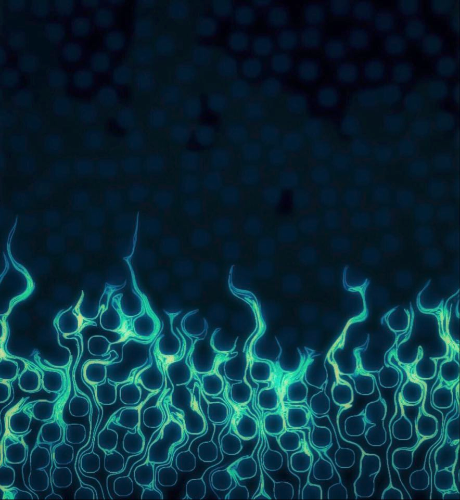About the project
Mixing is the operation by which a system is brought from segregation to uniformity. Solute mixing exerts an important influence on chemical reactions by bringing reactants in contact. It thus controls processes across a wide range of natural and industrial porous systems; spanning from CO2 sequestration in deep aquifers, to drug delivery in the human body. Recent work [1] has shown that the mixing dynamics in porous media are chaotic, implying that fluid elements are elongated at an exponential rate, potentially changing reaction rates by orders of magnitude compared to the predictions of conventional models. However, despite its ubiquity, very little is currently known about solute mixing in multiphase flows, i.e. when two or more phases are flowing together in a porous medium. Only very recently have the numerical methods, experimental techniques and theories of related systems reached a level of maturation where a quantitative investigation of these processes is feasible. The ambition of M4 is to establish the laws of mixing in multiphase porous media flows; and thereby to theoretically explain and predict mixing in time-dependent, multiphase flows in a wide class of porous materials. To achieve this, we will develop numerical methods for highly accurate simulation of mixing in multiphase flows, and we will design and execute novel experiments imaging solute mixing in 3D porous media and microfluidic geometries.
M4 brings together world-leading, complementary expertise on its two key ingredients: multiphase flow and mixing in porous media. It involves partners from the University of Oslo, the University of Rennes and SINTEF Digital, and is an interdisciplinary collaboration unifying theoretical, numerical and experimental approaches with perspectives to the many applications of microfluidics.

Objectives
Primary objective:
Establish the laws of mixing in multiphase porous media flows.
Secondary objectives:
- Characterize and theoretically explain the effect of the interaction between complex flow patterns and porous geometry on the mixing dynamics.
- Develop and improve numerical methods for mixing in multiphase flow.
- Develop efficient, scalable, and user-friendly open-source software.
- Design the first experiments providing pore-scale images of mixing in 3D multiphase flows.
- Establish an interdisciplinary collaboration between the Universities of Oslo and Rennes and SINTEF Digital.
Outcomes
The project M4 represents groundbreaking basic research and will help the scientific community fundamentally understand how mixing occurs in microscopic confinement beyond steady single phase flows.
- The novel theoretical framework developed in this project, validated by unique 3D experiments and simulations, will be particularly relevant for describing the transport and reactions of solutes in porous systems in biology and geoscience.
- The open-source computational tools developed in the project will benefit both the porous media and microfluidics communities. Due to improved solvers, the multiphase simulation method will solve problems beyond mixing, and the mixing algorithm will be useful for applied scientists aiming to improve mixer designs.
- The industrially relevant long-term impact of M4 is the prospect of leveraging the theoretical and numerical framework to optimally design micromixers. The idea of using statistical descriptions of geometry and multiphase flow may open new avenues in mixer design.
Background
[1] Heyman, J., Lester, D. R., Turuban, R., Méheust, Y., & Le Borgne, T. (2020). Stretching and folding sustain microscale chemical gradients in porous media. Proceedings of the National Academy of Sciences.
Financing
The Research Council of Norway, NFR Researcher Project for Young Talents. Project number: 102744101
Cooperation
- PoreLab, The Njord Centre, University of Oslo, Norway.
- University of Rennes 1, France
- SINTEF Digital, Mathematics and Cybernetics
